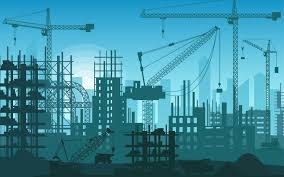Exploring the Essential Role of Structural Design in Modern Architecture

The Importance of Structural Integrity in Building Design
When it comes to constructing buildings, structural integrity is a fundamental aspect that cannot be overlooked. The structural design of a building is crucial for ensuring its stability, safety, and longevity.
Structural engineers play a vital role in the construction process by designing the framework that supports the building’s weight and withstands various forces such as wind, earthquakes, and snow loads. By carefully considering factors like material strength, load distribution, and building codes, structural engineers create designs that ensure the building’s durability.
Structural integrity is not just about ensuring a building stands upright; it also influences its functionality and aesthetics. A well-designed structure allows for efficient use of space, optimal natural light penetration, and seamless integration of architectural elements.
Moreover, buildings with strong structural integrity are safer for occupants and less prone to damage during natural disasters or unforeseen events. By adhering to strict structural standards and regular maintenance protocols, building owners can enhance the longevity of their structures.
In conclusion, the significance of structural integrity in building design cannot be overstated. It forms the backbone of any construction project, ensuring safety, stability, and sustainability. Investing in robust structural design not only benefits the present but also secures a solid foundation for the future.
Seven Essential Tips for Robust Structural Integrity in Construction
- Ensure proper alignment of structural elements
- Use high-quality materials for durability
- Follow building codes and regulations
- Consider environmental factors in design
- Include sufficient support beams and columns
- Regularly inspect for signs of wear or damage
- Consult with a structural engineer for complex projects
Ensure proper alignment of structural elements
Ensuring the proper alignment of structural elements is essential in maintaining the integrity and stability of a building. When structural components are correctly aligned, they can effectively distribute loads and resist forces, preventing potential structural failures. Proper alignment also contributes to the overall aesthetic appeal of the building and ensures that it functions as intended. By paying close attention to alignment during the construction process, builders can enhance the longevity and safety of the structure, ultimately creating a solid foundation for years to come.
Use high-quality materials for durability
Utilising high-quality materials is paramount when considering the structural integrity of a building. By opting for premium materials that are known for their durability and strength, such as reinforced concrete or steel beams, you can significantly enhance the longevity and resilience of the structure. Investing in quality materials not only ensures the safety of occupants but also minimises maintenance costs in the long run. Prioritising durability in material selection is a wise decision that pays dividends in terms of structural stability and overall building performance.
Follow building codes and regulations
Adhering to building codes and regulations is a crucial tip when it comes to ensuring structural integrity in construction projects. These guidelines are put in place to safeguard the safety of occupants, protect the environment, and promote sustainable building practices. By following these codes diligently, builders can ensure that their structures meet the required standards for structural stability, fire safety, accessibility, and more. Compliance with building regulations not only enhances the safety and durability of a building but also helps in avoiding costly legal issues and delays during the construction process.
Consider environmental factors in design
When designing a structure, it is crucial to take into account environmental factors to ensure a sustainable and resilient building. Factors such as local climate, sun orientation, wind patterns, and the surrounding landscape can greatly impact the structural integrity and energy efficiency of a building. By incorporating these environmental considerations into the design process, architects and engineers can create buildings that not only minimise their environmental footprint but also enhance occupant comfort and well-being. This holistic approach to design not only benefits the environment but also contributes to creating healthier and more efficient spaces for people to live and work in.
Include sufficient support beams and columns
When designing a building, it is crucial to incorporate an adequate number of support beams and columns to ensure structural stability and integrity. These elements play a vital role in distributing the weight of the building evenly and providing resistance against various forces. By strategically placing support beams and columns, architects and engineers can enhance the strength of the structure, reduce the risk of structural failure, and create a safe environment for occupants. Properly integrating sufficient support elements into the design not only reinforces the building’s framework but also contributes to its longevity and performance over time.
Regularly inspect for signs of wear or damage
Regularly inspecting a building for signs of wear or damage is a crucial practice in maintaining its structural integrity. By identifying and addressing issues early on, such as cracks, corrosion, or sagging, property owners can prevent minor problems from escalating into major structural concerns. Scheduled inspections help ensure that the building remains safe, stable, and resilient over time, ultimately prolonging its lifespan and reducing the risk of costly repairs in the future.
Consult with a structural engineer for complex projects
When tackling complex construction projects, it is highly advisable to seek guidance from a qualified structural engineer. Their expertise and knowledge are invaluable in ensuring that the design and implementation of the structure meet safety standards and regulatory requirements. By consulting with a structural engineer, you can benefit from their insights on load-bearing capacities, material selection, and structural stability, ultimately leading to a well-executed project that stands the test of time.
Tags: aesthetics, alignment of structural elements, building codes, building codes and regulations, building design, compliance, durability, environmental factors in design, functionality, high-quality materials, load distribution, longevity, material strength, safety, structural, structural engineers, structural integrity, sustainable building practices